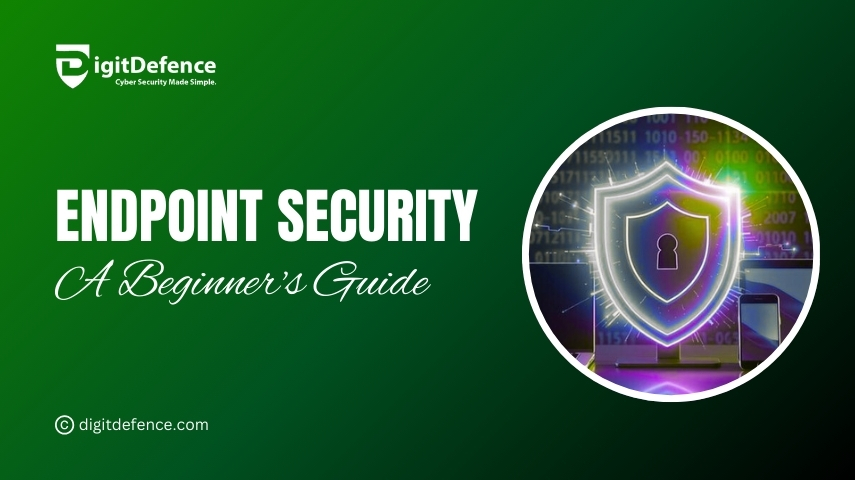A Beginner's Guide to Endpoint Security: What You Need to Know
 yamini k
yamini k
In today's digital world, cyber threats are evolving faster than ever, making endpoint security a crucial aspect of cybersecurity. But what exactly is endpoint security, and why should you care? Whether you're a business owner, an IT professional, or just someone who values online safety, understanding endpoint security is essential.
Understanding Endpoints
Definition of Endpoints
Endpoints refer to any device that connects to a network. This includes computers, smartphones, tablets, and even IoT devices. These devices are the frontline targets for cybercriminals looking to exploit vulnerabilities.
Common Types of Endpoints
Laptops and Desktops – Used for business and personal purposes, making them frequent attack targets.
Mobile Devices – Smartphones and tablets are often overlooked but are prime targets for hackers.
IoT Devices – Smart home gadgets, wearables, and industrial IoT devices are highly vulnerable due to weak security measures.
How Endpoints are Targeted by Cyber Threats
Cybercriminals use various methods to exploit endpoint vulnerabilities, including malware, phishing scams, and direct hacking attempts. Understanding these threats is the first step in defending against them.
Common Endpoint Security Threats
Malware and Ransomware: Malware refers to malicious software designed to harm devices. Ransomware, a specific type, locks users out of their files until a ransom is paid.
Phishing Attacks: Cybercriminals trick users into revealing sensitive information through fake emails and websites.
Insider Threats: Not all threats come from outside sources. Employees with malicious intent or those who unknowingly expose data can be just as dangerous.
Zero-Day Exploits: These are vulnerabilities in software that cybercriminals exploit before the developer releases a fix.
Advanced Persistent Threats (APTs): Highly sophisticated cyber attacks where hackers remain undetected in a system for extended periods.
Key Components of Endpoint Security
Antivirus and Anti-Malware Software: This is the first line of defense against common threats like viruses and spyware.
Firewalls and Network Security: Firewalls monitor and control incoming and outgoing network traffic based on security rules.
Endpoint Detection and Response (EDR): EDR solutions provide continuous monitoring and response to endpoint threats.
Patch Management: Regular updates and patches prevent cybercriminals from exploiting software vulnerabilities.
Data Encryption: Encrypting data ensures that even if an attacker gains access, the information remains unreadable.
Multi-Factor Authentication (MFA): Adding an extra layer of security makes it harder for attackers to gain access to sensitive data.
Best Practices for Implementing Endpoint Security
Regular Software Updates – Always install security updates promptly.
Employee Training – Educate employees on recognizing phishing scams and security threats.
Strong Password Policies – Encourage the use of complex passwords and password managers.
Limiting User Privileges – Restrict access to only what employees need for their roles.
Zero Trust Architecture – Never assume trust within a network. Always verify access requests.
Choosing the Right Endpoint Security Solution
Factors to Consider
Ease of use
Integration with existing systems
Cost-effectiveness
Scalability
Cloud-Based vs. On-Premises Security
Cloud-based security offers flexibility and automatic updates, while on-premises security gives full control over configurations.
Popular Endpoint Security Solutions
Norton
McAfee
Bitdefender
CrowdStrike
Future Trends in Endpoint Security
Artificial Intelligence and Machine Learning in Security
AI-powered security tools can detect and respond to threats in real-time.
The Role of Blockchain
Blockchain technology provides a secure and tamper-proof way to verify data integrity.
Increasing Threats and Evolving Strategies
As cyber threats evolve, security strategies must also adapt. The future of endpoint security lies in proactive measures and continuous monitoring.
Endpoint security is no longer optional—it's a necessity. Cyber threats are becoming more sophisticated, and protecting your devices requires a proactive approach. By understanding threats, implementing best practices, and choosing the right security solutions, you can significantly reduce your risk of cyberattacks.
Subscribe to my newsletter
Read articles from yamini k directly inside your inbox. Subscribe to the newsletter, and don't miss out.
Written by
